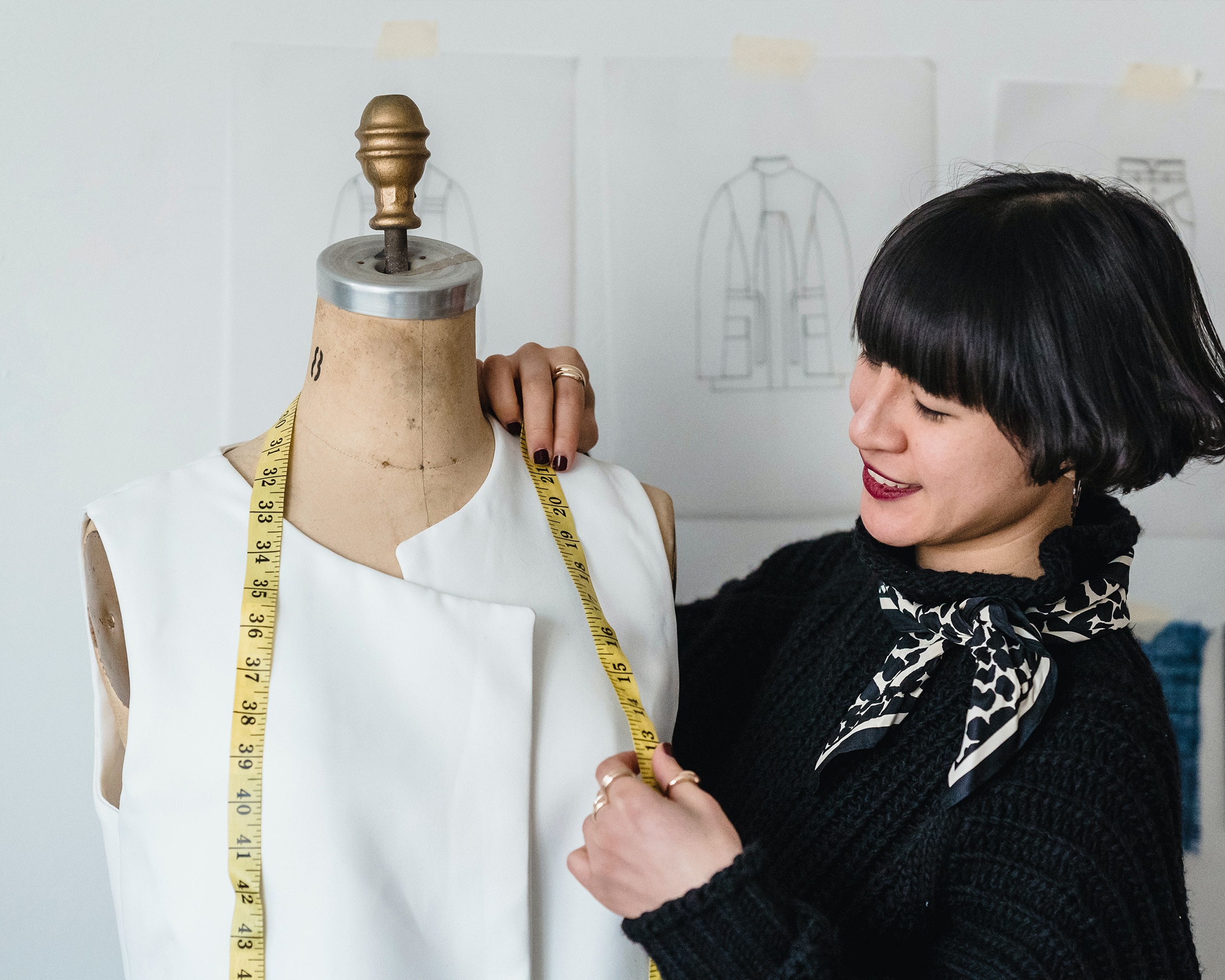In a global industry like fashion, that relies heavily on creative inspiration and interpretation, avoiding cultural appropriation can be a tricky needle to thread.
If I were to ask you to picture the average runway model, what would you see? Odds are it’s a young woman. She’s white and she’s skinny. Now picture the designer who made the gorgeous dress she’s wearing: What do they look like? If they turned out to be white, too, I don’t blame you. You’re most likely right.
The fashion industry, in all its vibrant glory, is still painfully monochromatic. Even in the best rooms to be in – backstage at London, New York or Paris Fashion Week, for example – black designers and models stand out from the crowd. They’re the minority, they’re usually ‘token’ placements – they seem to be there to ‘tick’ a box – and their work is often plagiarised. It’s these impressions that we’re forced to sit with as we hold our tongues and try to be grateful – that, you know, at least they are there…
One tough industry
This is not to say that fashion is a racist, bigoted industry and that any person of colour with runway dreams should abandon it and take up accounting. It has always been a notoriously difficult industry to be successful in. But how much harder is it, then, for a POC to crack?
Think about it: How many POC models or designers can you name off the top of your head? To make the question even tougher, how many of those designers’ names are attached to fashion houses that have existed for more than 20 years? What does that mean when we know that fashion looks to the whole world, to all races and creeds and cultures, for inspiration? Well, simply put, it means we must be aware of the problem that is cultural appropriation.
The ‘what’ and ‘why’
‘Cultural appropriation’ is when any culture in a position of power borrows from the aesthetics and traditions of a culture that is not in a power position. Now, this may not seem like a bad thing at first. In fact, many who choose to label it as ‘cultural appreciation’ would say it’s a good thing, that it’s a gift and a compliment and gives unsung cultures a platform.
The problem is that we’re talking about fashion – an industry that, despite where inspiration may come from, is visual at its base. This means that whichever elements are taken from a certain culture and make their way into a collection, transformed in the eyes of a (likely white) designer, will only be represented visually – and in an altered form, at that.
The original heft or reverence these aesthetic modes may enjoy in their original context is, more often than not, lost in translation. This act can be offensive, hurtful and even re-traumatising when you consider how much harder non -white folk must work to make it in mainstream fashion. Despite this sad truth, fashion is rife with appropriation. The list of those who have overstepped is a long one. We’ll mention a few.
A step too far
In 2019, Gucci had to pull an offensive ‘balaclava’ poloneck from the market that distinctly resembled ‘blackface’, having not learned from Prada who did the same thing with a keychain the year before. Who could forget when Commes des Garçons featured white models with cornrows, or when Dolce & Gabbana insulted the whole of China when it ran an ad in which a Chinese woman was struggling to eat pizza with chopsticks?
Netflix’s recent four-part docuseries Queen Cleopatra came under fire because Cleopatra VII (the last pharaoh of Egypt) was depicted as a black woman with braided hair. Critics called this a form of “gross misrepresentation and historical revisionism”.
With the recent Barbie movie frenzy, American internet media company BuzzFeed came under attack for releasing 195 AI-generated Barbie dolls with the idea of exploring what Barbies from different countries and cultures would look like. Sounds fun and harmless, right? Well, Arab and African activists weren’t laughing. The AI images sparked controversy for propagating offensive stereotypes, especially the South Sudan, Kuwait and Qatar versions.
In the past two decades, the world has become more globalised and it’s clear that people don’t fit the stereotypes. Add to that the current cultural zeitgeist, which is overwhelmingly diversity-oriented, and one needs to tread carefully. This is not a fancy-dress party.
“The results of BuzzFeed’s experiment contained extreme forms of representational bias, including colourist and racist depictions, which is something that AI image generators are often prone to doing,” said a TikTok posted by the London Interdisciplinary School (LIS). “With AI image generators gaining huge popularity, it’s important that we are vigilant about the forms of bias that these technologies can fuel.”
Time for change
Instead of focusing on these negatives, let’s look at a designer who can serve as inspiration to other designers hoping to avoid the same issues. When Maria Grazia Chiuri was the co-creative director of Valentino, she did a show in 2015 “inspired by wild Africa”. The fashion house described the affair as “primitive…yet regal” in its show notes. Yet there were fewer than 10 non-white models, and all the garments were made and shown in Paris. Needless to say, her cornrow-clad collection was lampooned on arrival.
Having learned from her mistakes (though not overcoming her predilection for misplaced belts) Maria did things differently. In 2019, now as the creative director of Dior, the show for her Morocco-inspired collection took place in Marrakesh. She involved Moroccan textile consultants for the fabrics and even featured local artisans’ work as part of the seating and décor for the event.
Maria is fighting to turn the tide of appropriation through her eye-catching runway displays. In a field where many designers have highlighted various cultures, but few have actually collaborated with those cultures, Maria has not only made it a deliberate brand mandate, but she has also made it a focal point. “This is my obsession,” she declares. “It is crucial for the development of fashion. Knowledge, culture and history must all be preserved.”
The latter example is how to do it right. When anyone in fashion (an industry still dominated by the world’s former colonial powers) even so much as considers borrowing from a culture that is not their own, the very first thing should be to involve that culture in the process of bringing the idea to life. It is only by sharing power, and giving up one’s privilege in favour of true collaboration, that the fashion world can grow and become truly intersectional. It’s simply the only way forward.
Words: Arlin Bantam (Additional text: Charndré Emma Kippie
Photography: Pexels







